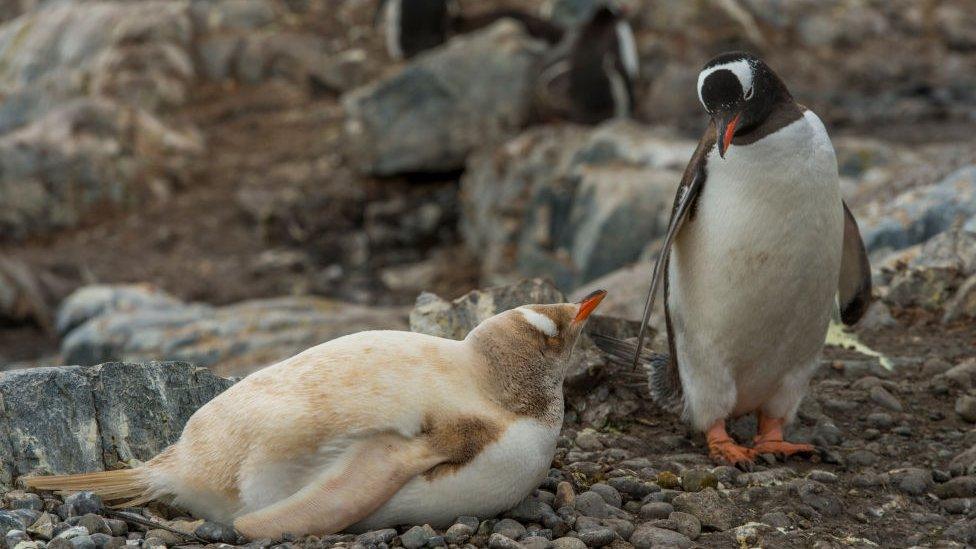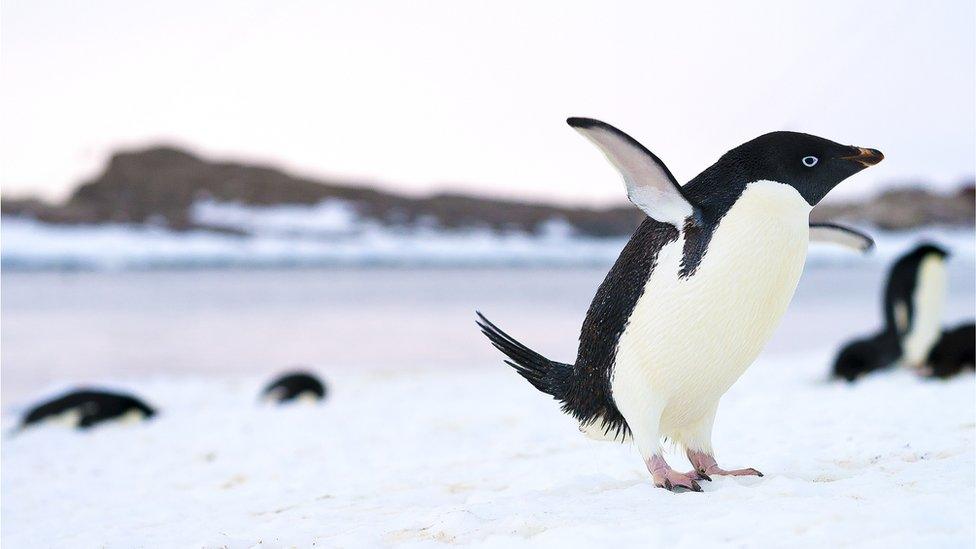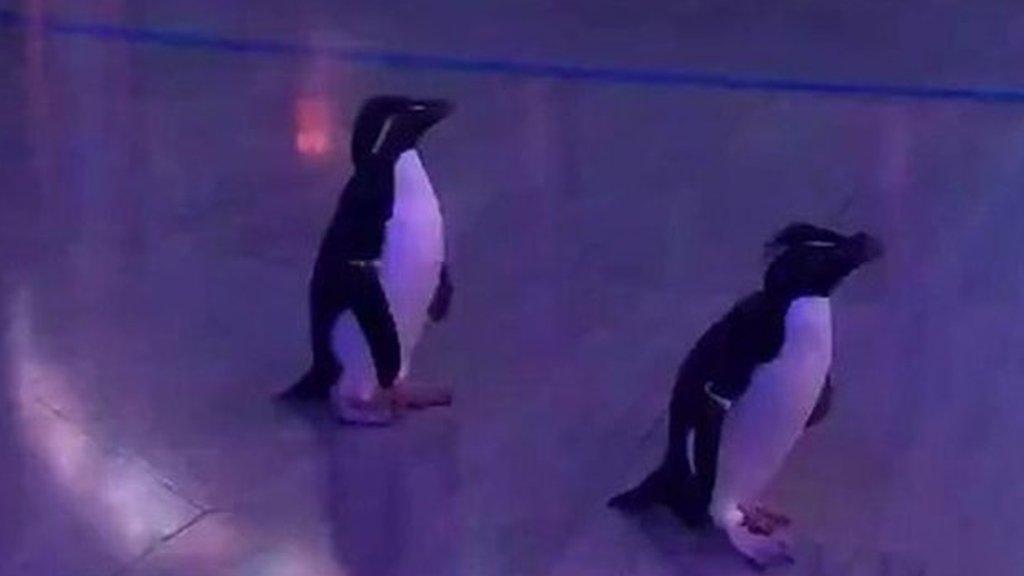Wildlife: 'Never seen before' yellow penguin spotted in South Atlantic
- Published
- comments

A lucky wildlife photographer has revealed his photo of what experts think could be a 'never before seen' yellow penguin.
Yves Adams was leading a two-month photography expedition through Antarctica and the South Atlantic in 2019 when he stopped off at the wild islands of South Georgia to photograph their colony of more than 120,000 king penguins.
But one unusual bird drew his attention. Yves, from Ghent, Belgium, said: "I'd never seen or heard of a yellow penguin before. There were 120,000 birds on that beach and this was the only yellow one there.
"They all looked normal except for this one. It really was something else. It was an incredibly unique experience."
Why is the penguin yellow?

Here are two gentoo penguins on the Antarctic mainland in Paradise Bay. The one on the right has the usual black and white plumage but the one on the left is leucistic and is mostly creamy white
Some types of penguins have coloured plumage on occasion, but most penguins are the way you imagine them to be - black and white.
The penguin is believed to be leucistic which means its cells don't create melanin (the chemical in our bodies which give skin, hair and eyes their colour) in the way it does with most penguins.
Leucistic penguins have some similarities with albino penguins but there are some differences too.
In leucistic birds, affected feathers lack melanin. This results in white feathers, unless the plumage colour also has carotenoids (e.g. yellows). But the bird's eyes are unaffected.
Albinism also results in white feathers but true albinos are thought to be rare in the wild. An albino individual is unable to produce melanin pigments. But albinos have pink eyes while the eyes of leucistic birds remain dark.
British Trust for Ornithology
Leucistic penguins are still pretty rare but are usually a creamy colour - but this bird's yellow stripe is very unusual.
Scientists think the sighting could mean the discovery of a new class of feather pigment.
- Published20 January 2021

- Published17 March 2020

